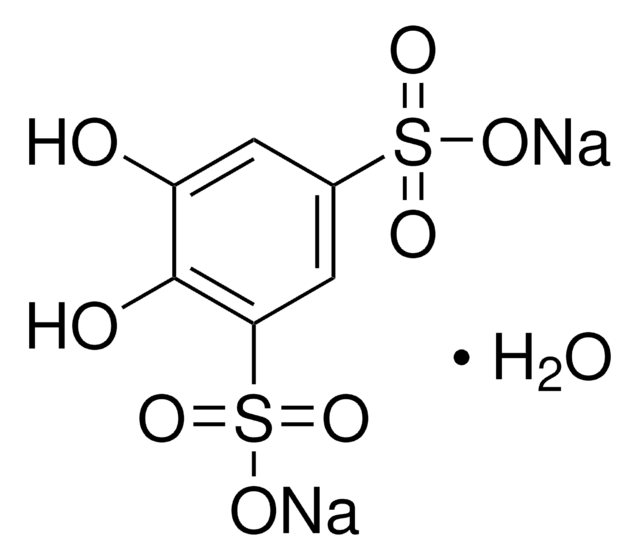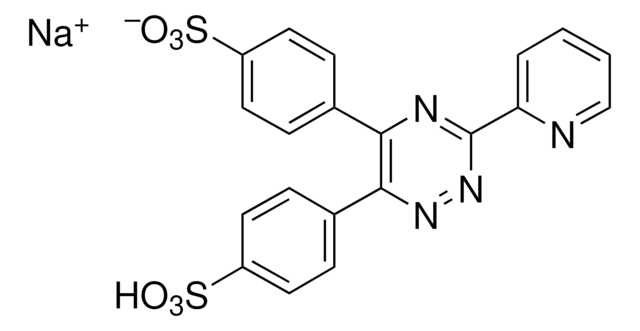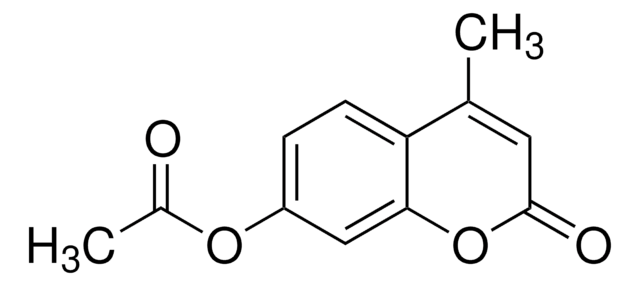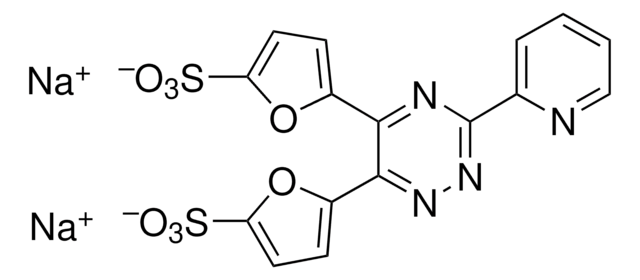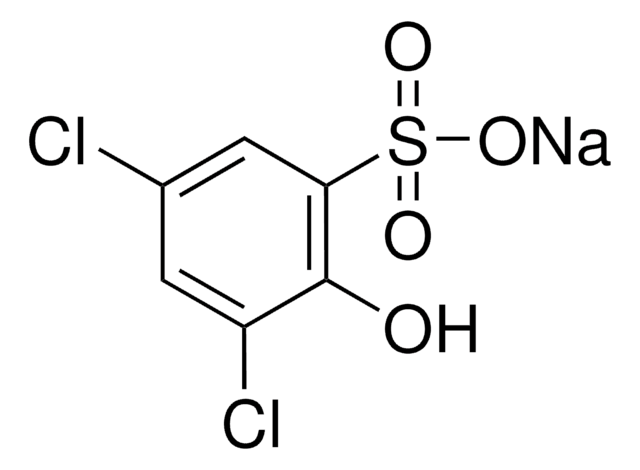1.01922
3,5-Pyrocatecholdisulfonic acid disodium salt monohydrate
metal indicator
Synonym(s):
3,5-Pyrocatecholdisulfonic acid disodium salt monohydrate, 1,2-Dihydroxy-3,5-benzenedisulfonic acid disodium salt, di-Sodium 4,5-dihydroxy-1,3-benzenedisulfonate, Sodium pyrocatechol-3,5-disulfonate, Tiron
About This Item
Recommended Products
Product Name
3,5-Pyrocatecholdisulfonic acid disodium salt monohydrate, (Tiron) metal indicator
Quality Level
form
solid
composition
Water, 4.5-6.5% Karl Fischer
pH
5.0 (20 °C, 10 g/L in H2O)
mp
300 °C
solubility
1350 g/L
bulk density
465 kg/m3
λmax
290-291 nm (buffer pH 2.5)
storage temp.
15-25°C
InChI
1S/C6H6O8S2.2Na/c7-4-1-3(15(9,10)11)2-5(6(4)8)16(12,13)14;;/h1-2,7-8H,(H,9,10,11)(H,12,13,14);;/q;2*+1/p-2
InChI key
ISWQCIVKKSOKNN-UHFFFAOYSA-L
Application
- The oxidative degradation of Calmagite using added and in situ generated hydrogen peroxide catalysed by manganese(II) ions: A study evaluating the efficacy and degradation pathways in environmental testing, highlighting potential applications of similar compounds like 3,5-Pyrocatecholdisulfonic acid disodium salt monohydrate in waste management and pollutant analysis (Cao Y, Sheriff TS, 2022).
- Synthesis of conformationally restricted acidic lipids: Discusses techniques that could be utilized in the synthesis and analysis of structurally similar compounds like 3,5-Pyrocatecholdisulfonic acid disodium salt monohydrate, enhancing understanding in material science and biomedical research (Rakitzis ET et al., 1978).
Analysis Note
Absorption maximum λmax. (buffer pH 2.5): 290 - 291 nm
Spec. Absorptivity A 1%/1cm (λmax; 0.05 g/l; buffer pH 2.5; calculated on anhydrous substance): 100 - 125
Water (according to Karl Fischer): 4.5 - 6.5 %
Suitability as indicator (for metal titration): passes test
Signal Word
Warning
Hazard Statements
Precautionary Statements
Hazard Classifications
Eye Irrit. 2 - Skin Irrit. 2
Storage Class Code
11 - Combustible Solids
WGK
WGK 3
Certificates of Analysis (COA)
Search for Certificates of Analysis (COA) by entering the products Lot/Batch Number. Lot and Batch Numbers can be found on a product’s label following the words ‘Lot’ or ‘Batch’.
Already Own This Product?
Find documentation for the products that you have recently purchased in the Document Library.
Our team of scientists has experience in all areas of research including Life Science, Material Science, Chemical Synthesis, Chromatography, Analytical and many others.
Contact Technical Service